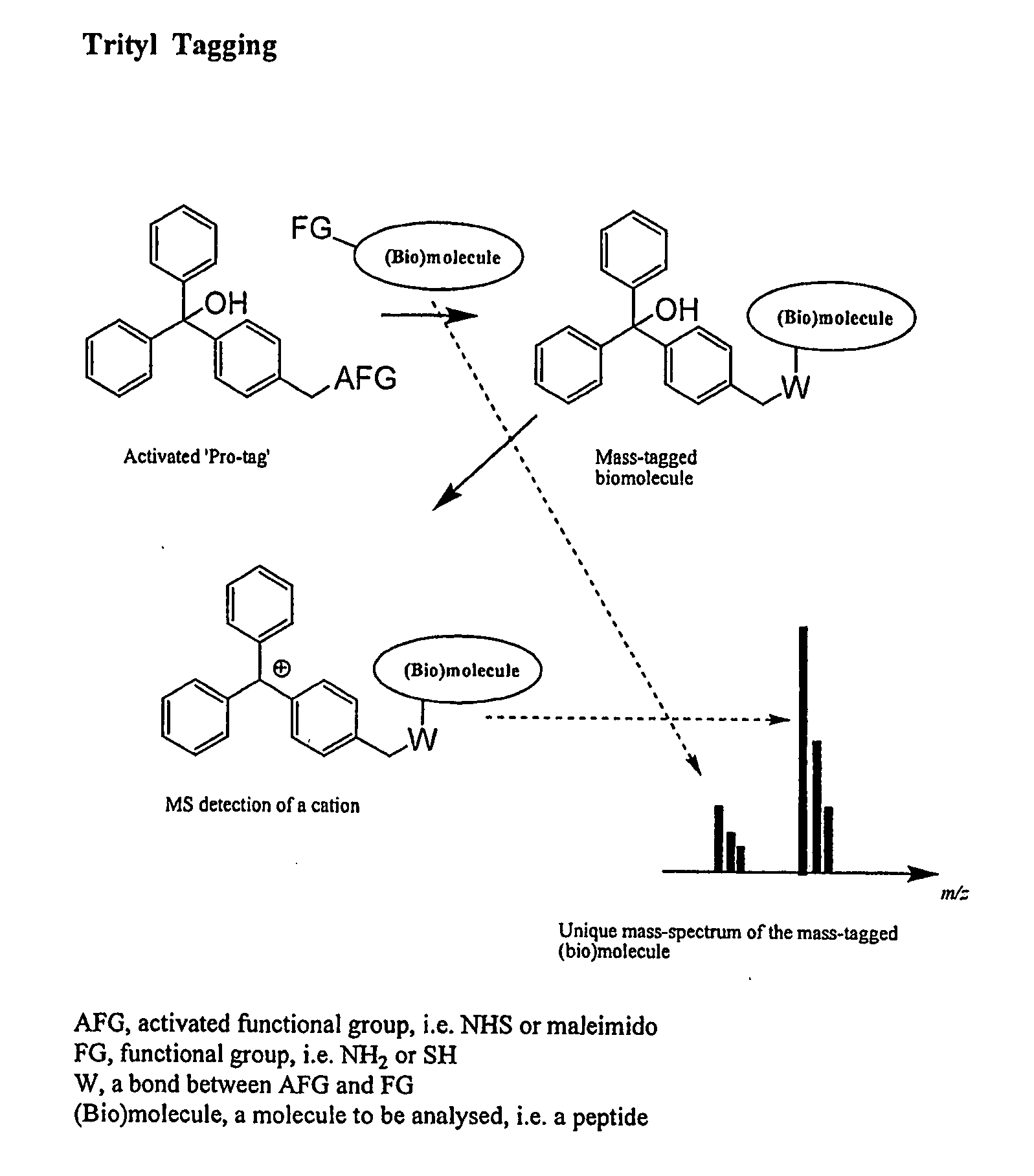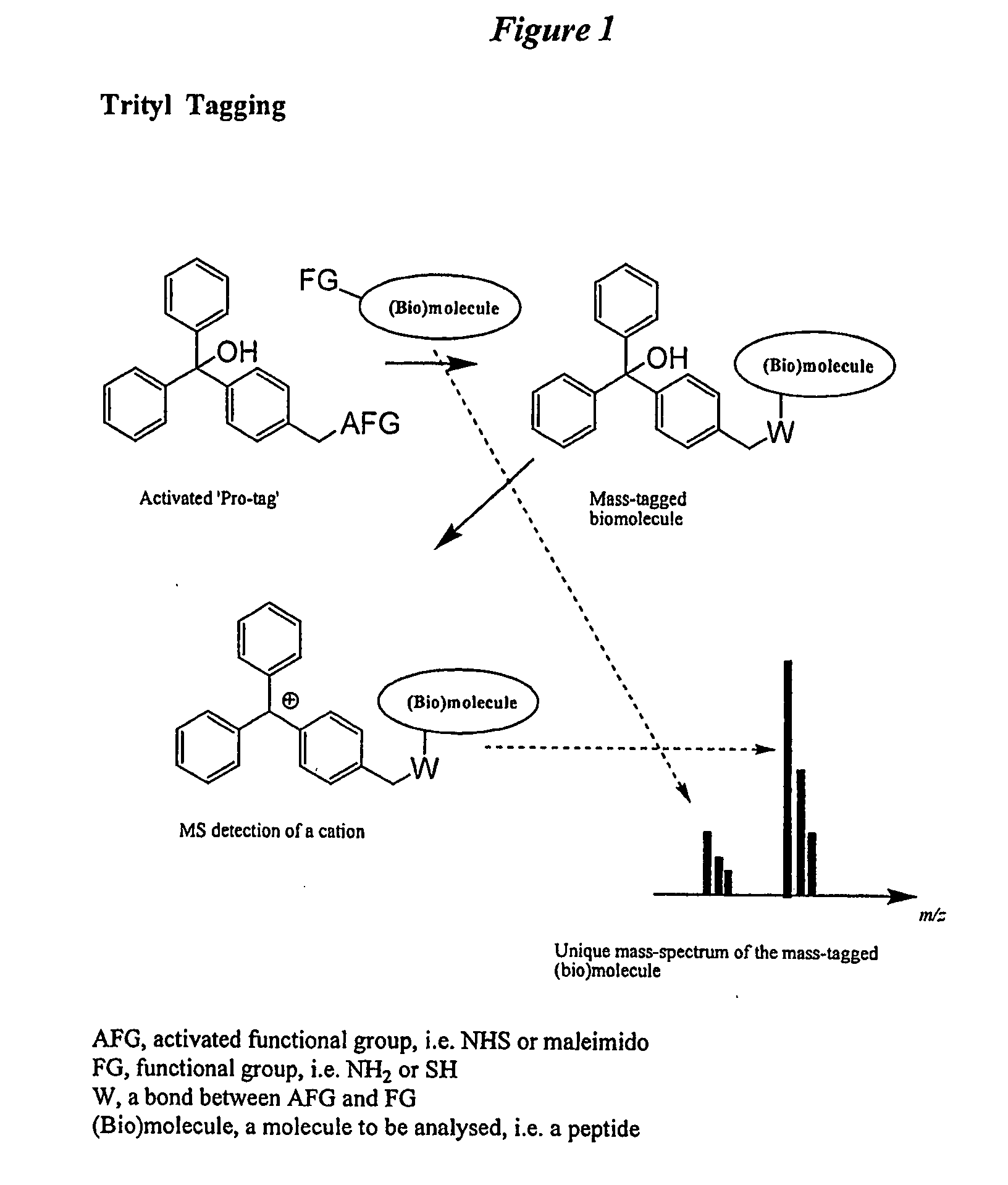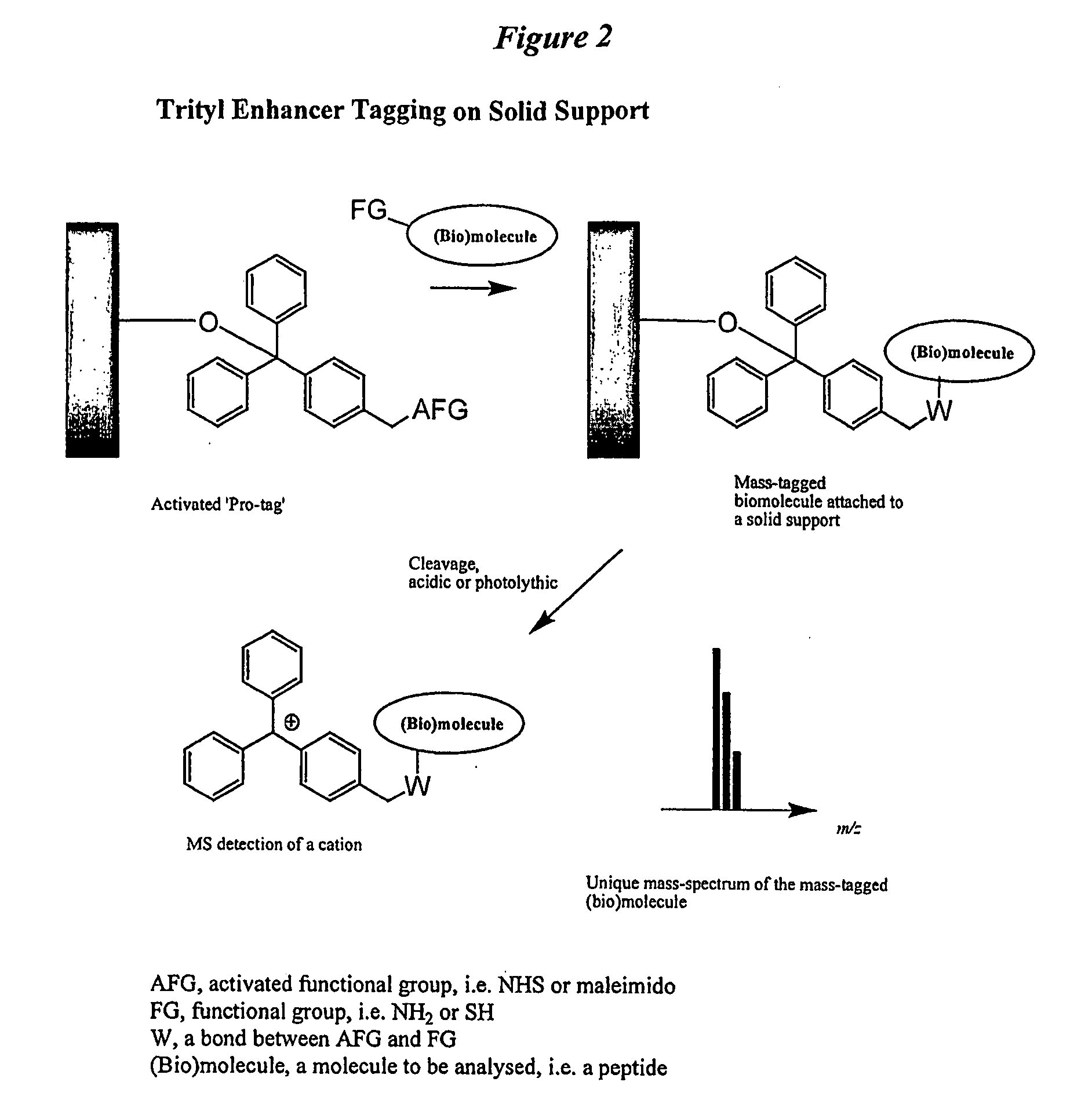Trityl derivatives for enhancing mass spectrometry
- Summary
- Abstract
- Description
- Claims
- Application Information
AI Technical Summary
Benefits of technology
Problems solved by technology
Method used
Image
Examples
example 1
Conjugation of a Trityl Tag (in Solution Phase) with Solid Support-Bound Biopolymer
[0373]A 15mer poly-T oligonucleotide was synthesised on an ABI 394 DNA synthesiser using a T CPG support according to standard protocols of phosphoramidite chemistry on 0.2 μmol scale. After the last coupling, a MMTr-protected ‘aminolink’ phosphoramidite (Glen Res., USA) was added to a growing chain and deprotected using standard deblocker (2% DCA in DCM). The column was removed from the synthesiser, and after 10 min wash with acetonitrile it was attached to two 5 ml syringes and washed with a 0.1M solution of NHS-activated 4,4′-dimethoxy-4″-carboxyethyl trityl for 10 min at RT. The column was then washed with (3×10 ml) acetonitrile, placed on a DNA synthesiser and deprotected with ammonia according to standard protocols. The residue obtained after the evaporation was dissolved in 0.1 ml of 2M LiClO4 and precipitated from cold acetone (1.5 ml). The precipitate was washed with 0.5 ml of acetone and dri...
example 2
Homogenous Conjugation of a Trityl with Non-Polymeric Ligands
[0374]A solution of NHS-activated 4,4′-dimethoxy-4″-carboxyethyl trityl (0.1M) in THF / dioxane (1:1) was mixed with a solution (0.5-1M) of an amine or of a mixture of amines (for example, propyl amine, butyl amine, pentyl amine, hexyl amine and phenethyl amine), typically 10 ml of a solution of an activated trityl with 5 ml of an amine solution. The mixtures were purified on prep-TLC (2 mm-thick glass plates with UV254 indicator, Analtech / Aldrich-Sigma), typically in chloroform with 0.5% triethylamine. The areas containing the desired products were scratched off the plate, and the conjugates or the mixtures thereof were eluted using same solvent with 2-5% MeOH, filtered through a layer of glass wool, evaporated and dried.
example 3
Homogenous Conjugation of a Nhs-Activated Trityl with Polymeric Ligands
[0375]A peptide, an oligonucleotide, or any other biopolymer containing a (primary) amino group, is dissolved in a mixture of water and acetonitrile depending on its solubility, typically 20-50% of water in CH3CN. Non-aminogroup-containing buffers (ie. 50 mM sodium phosphate, 0.15 M NaCl, pH 7.2, or a bicarbonate buffer, but an additional desalting step may then need to be introduced to cut off the metal ions prior to mass-spectrometry) can be used to keep the pH at between 7-9. For particularly poorly soluble ligands other solvents may be used such as THF, DMSO, etc.
[0376]A solution of NHS-activated 4,4′-dimethoxy-4″-carboxyethyl trityl in acetonitrile or THF is added in approx. 5-10 times excess compared to an amine component. Conjugation usually reaches the maximum yield over 2-4 hours of reaction time. The conjugate formed can be analysed by MS directly, or after HPLC-purification.
PUM
| Property | Measurement | Unit |
|---|---|---|
| Nanoscale particle size | aaaaa | aaaaa |
| Electric charge | aaaaa | aaaaa |
Abstract
Description
Claims
Application Information
 Login to View More
Login to View More - R&D
- Intellectual Property
- Life Sciences
- Materials
- Tech Scout
- Unparalleled Data Quality
- Higher Quality Content
- 60% Fewer Hallucinations
Browse by: Latest US Patents, China's latest patents, Technical Efficacy Thesaurus, Application Domain, Technology Topic, Popular Technical Reports.
© 2025 PatSnap. All rights reserved.Legal|Privacy policy|Modern Slavery Act Transparency Statement|Sitemap|About US| Contact US: help@patsnap.com



